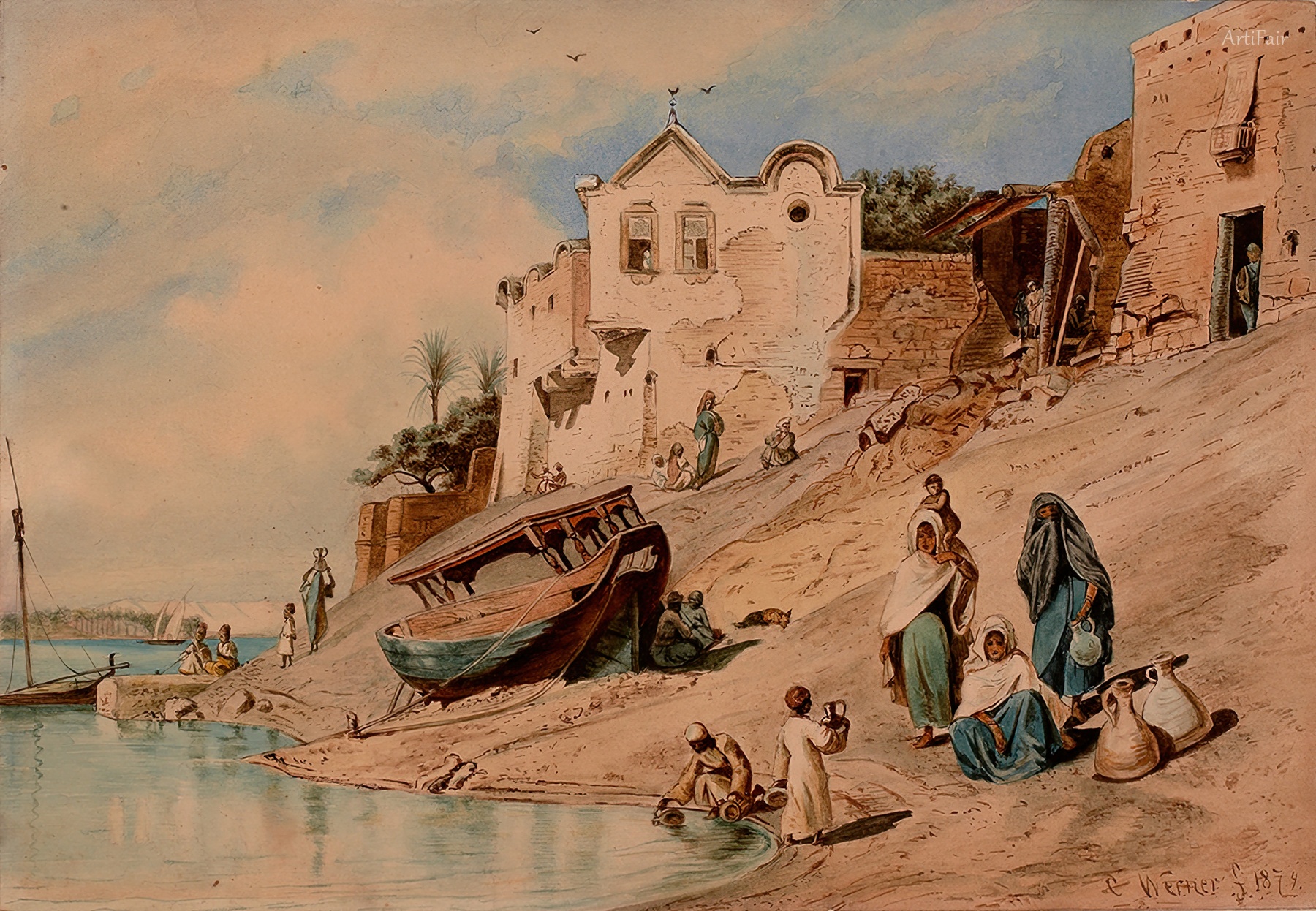

Carl Werner
DE
50
Artworks
1808 - 1894
Lifespan
Artist Biography
Carl Friedrich Heinrich Werner, born on October 4, 1808, in Weimar, Germany, was a distinguished watercolor painter renowned for his meticulous depictions of architectural marvels and vibrant landscapes. His artistic journey began under the tutelage of Julius Schnorr von Carolsfeld in Leipzig, where he studied painting. Werner briefly explored architecture in Munich from 1829 to 1831, studying under Friedrich von Gärtner, an experience that profoundly influenced his later precision in rendering architectural details. However, his passion for painting soon drew him back, and in 1832, he secured a prestigious scholarship that enabled him to travel to Italy. This journey marked a pivotal moment in his career, leading him to establish a studio in Venice, where he resided for nearly two decades, until the 1850s, honing his skills and gaining recognition as a leading European watercolorist.
During his extended stay in Italy, Werner immersed himself in the rich artistic and architectural heritage of the country, particularly in Venice. He established a teaching atelier, further solidifying his reputation and influence within the art community. His works from this period, characterized by their luminous quality and intricate detail, captured the essence of Italian life and scenery. Werner became known for his mastery of the watercolor medium, a skill that allowed him to convey both the grandeur of historical sites and the subtle nuances of light and atmosphere. He frequently exhibited his paintings across Europe, with notable showcases in England at the New Watercolour Society, where he gained considerable acclaim and a dedicated following. His early works, like "Venice in her Zenith and Decline" and "The Ducal Palace, with a Scene from the Merchant of Venice," highlighted his fascination with historical and architectural themes.
Werner's insatiable curiosity and quest for new subjects led him on extensive travels beyond Italy. In 1856-1857, he journeyed through Spain, capturing the unique architecture and landscapes of the Iberian Peninsula, including famous sites like the Lions' Court of the Alhambra. His most significant expeditions, however, were to the Middle East. Between 1862 and 1864, he undertook an extensive tour of Palestine and Egypt. These travels were particularly fruitful, resulting in some of his most iconic works. A remarkable achievement during this period was his ability to gain access to the interior of the Dome of the Rock in Jerusalem, a sacred site rarely accessible to non-Muslims at the time. His detailed watercolors of this iconic structure, both its exterior and interior, offered unprecedented views to the Western world and remain historically significant.
The watercolors from his Middle Eastern journeys formed the basis for several important publications. In 1865, he published a collection of color lithographs in London titled "Jerusalem, Bethlehem and the Holy Places," followed by a more extensive work, "Jerusalem and the Holy Land," comprising 30 designs with text, in 1866-1867. His Egyptian experiences were documented in "Carl Werner's Nile Sketches," published in 1875, which further showcased his talent for capturing the exotic allure of distant lands. These publications, featuring high-quality reproductions of his watercolors, brought him international fame and catered to the growing European fascination with Orientalism. Later in his career, Werner continued to travel, visiting Greece in 1875 and Sicily in 1877-1878, constantly seeking new inspiration for his art.
Werner's artistic style was distinguished by his exceptional skill in watercolor, his meticulous attention to detail, particularly in architectural renderings, and his adept handling of light and color. His background in architectural studies endowed him with a profound understanding of form and perspective, which is evident in the precise and accurate depiction of complex structures, from the intricate stonework of the Dome of the Rock to the grandeur of Venetian palaces and the lively scenes of the Roman Carnival. His works often conveyed a sense of atmosphere and place, transporting viewers to the scenes he depicted. Notable works like "The Triumphal Procession of Doge Cantarini," "The Zisa Hall in Palermo," "View of Beirut," and "Isle of Philae" further exemplify his diverse subject matter and technical prowess. In his later years, he was appointed as a professor at the Leipzig Academy, a testament to his esteemed position in the art world.
Carl Werner's legacy extends beyond his impressive body of work. He was a pivotal figure in 19th-century watercolor painting, particularly in the genre of architectural and travel depiction. His ability to capture both the monumental and the picturesque, combined with his technical mastery, set a high standard for his contemporaries. He was a member of both the Venice and Leipzig Academies. Even at the age of eighty-three, in 1891, his passion for art and travel led him back to Rome. Carl Werner passed away in Leipzig on January 10, 1894, leaving behind a rich collection of watercolors that continue to be admired for their beauty, historical value, and artistic skill, housed in numerous European museums. His contributions significantly shaped the European perception of distant cultures and historical sites through the accessible and evocative medium of watercolor.